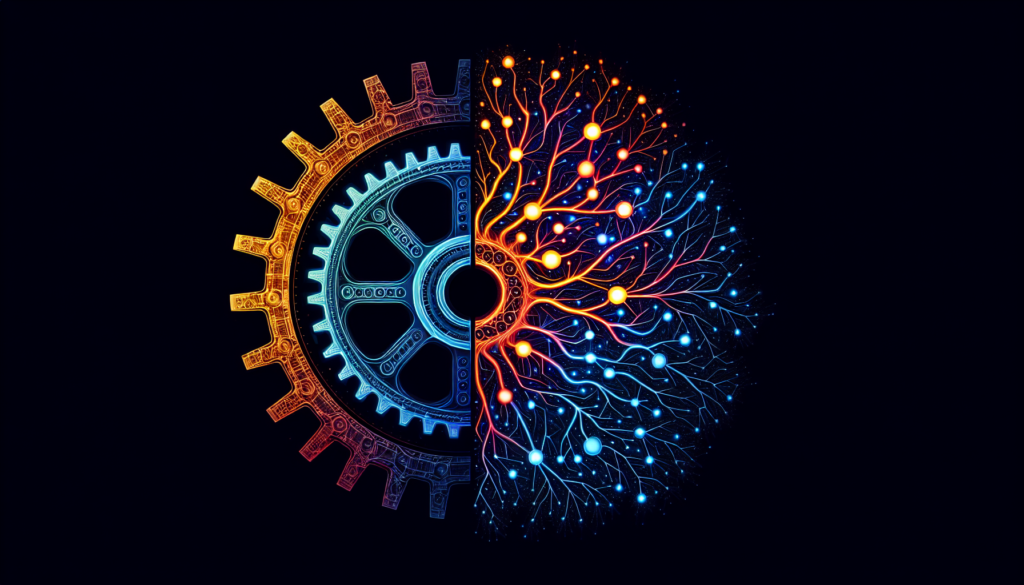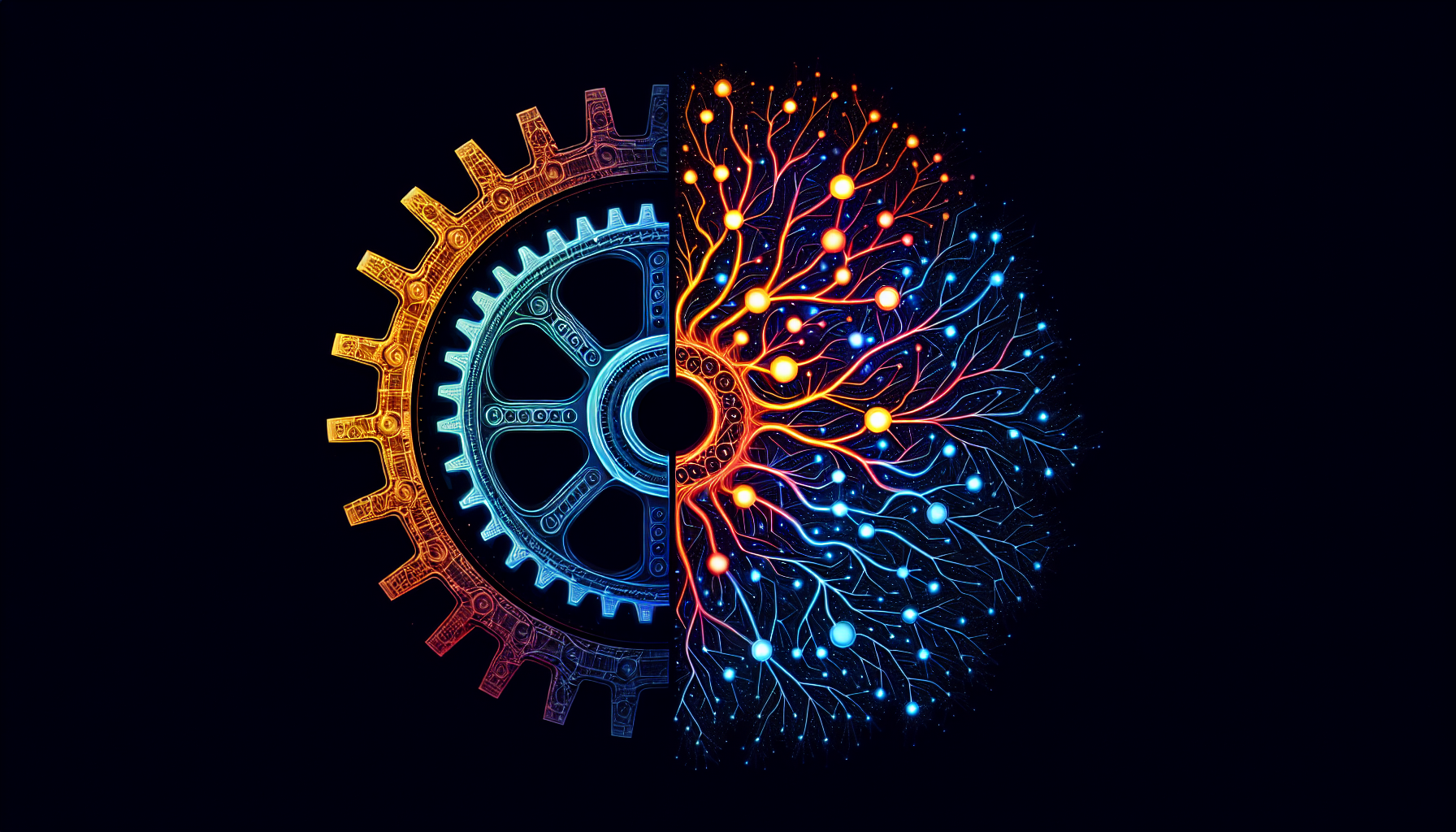So you’re eager to embark on the exciting journey of learning about artificial intelligence and data science, but you’re unsure where to start. Should you dive straight into the intricate world of AI, or perhaps lay the foundation with a solid understanding of data science? The answer to this question may seem elusive, but fear not, for this article aims to shed some light on the matter. Whether you’re a technophile eager to understand the intricacies of AI or a data enthusiast looking to make sense of vast amounts of information, let’s explore the paths of AI and data science, and uncover which one might be the best starting point for you.
Overview of AI and Data Science
Definition of AI
AI, which stands for Artificial Intelligence, refers to the simulation of human intelligence in machines that are programmed to think, learn, and problem-solve like humans. It encompasses various subfields, such as machine learning, natural language processing, and computer vision, which enable machines to perform tasks that typically require human intelligence.
Definition of Data Science
Data Science involves extracting useful insights and knowledge from large and complex datasets. It combines elements of computer science, mathematics, and statistics to analyze data and derive actionable insights. Data scientists use various tools and techniques to uncover patterns, trends, and associations in data, which help businesses make informed decisions and solve complex problems.
Relationship between AI and Data Science
While AI and Data Science are distinct fields, they are closely related and often overlap in many aspects. AI relies on data and algorithms to simulate human intelligence, making data science an integral part of AI. Data science, on the other hand, leverages AI techniques and technologies to make sense of vast amounts of data. Thus, AI and Data Science complement each other and work hand in hand to bring about significant advancements in various industries.
Skills Required for AI and Data Science
Mathematics and Statistics
A strong foundation in mathematics and statistics is crucial for both AI and Data Science. This includes proficiency in areas such as calculus, linear algebra, probability theory, and statistical analysis. These mathematical principles form the basis for understanding and applying AI algorithms and statistical models in data analysis and machine learning tasks.
Programming
Proficiency in programming languages, such as Python or R, is essential for both AI and Data Science. These languages offer a wide range of libraries and tools specifically designed for data manipulation, analysis, and visualization. Additionally, being proficient in programming enables data scientists and AI professionals to develop and implement algorithms, build models, and deploy AI systems.
Domain Knowledge
Having domain knowledge in a specific industry or field can greatly enhance the effectiveness of AI and Data Science applications. Understanding the nuances and intricacies of the domain allows data scientists and AI professionals to tailor their analyses and models to the specific requirements and challenges of that field. This domain knowledge helps in generating more accurate insights and solutions to complex problems.

Career Opportunities
AI Career Opportunities
The field of AI offers a wide range of exciting and rewarding career opportunities. AI professionals can work in various industries, including healthcare, finance, retail, and manufacturing, among others. Some of the common AI job roles include AI engineer, machine learning engineer, data scientist, AI researcher, and AI consultant. With the growing demand for AI technologies, there is a significant need for skilled professionals who can innovate and develop AI solutions.
Data Science Career Opportunities
Data Science is a rapidly evolving field that presents numerous career opportunities. Data scientists are in high demand across industries that rely on data-driven decision-making. Job roles in Data Science include data analyst, data scientist, business intelligence analyst, data engineer, and data architect. These professionals are responsible for gathering, cleaning, analyzing, and interpreting data to guide business strategies, improve processes, and optimize performance.
Demand and Market Trends
AI Market Trends
The AI market is experiencing exponential growth, driven by advancements in technology and the increasing adoption of AI solutions across industries. With the ability of AI to automate processes, improve efficiency, and make accurate predictions, businesses are investing heavily in AI technologies. The global AI market is expected to reach new heights in the coming years, and the demand for AI professionals is expected to skyrocket.
Data Science Market Trends
Similarly, the demand for Data Science professionals is also on the rise. The proliferation of data and the need to derive meaningful insights from it has thrust Data Science into the limelight. As organizations strive to become more data-driven, the demand for data scientists has surged. The market for Data Science professionals is projected to grow significantly, with a wide range of industries recognizing the value and impact of data-driven decision-making.

AI and Data Science Tools and Technologies
Machine Learning
Machine Learning is a subset of AI that focuses on enabling machines to learn from data and improve their performance without being explicitly programmed. Various machine learning algorithms, such as decision trees, support vector machines, and neural networks, are commonly used for tasks like predictive modeling, recommendation systems, and image classification.
Deep Learning
Deep Learning is a specialized form of machine learning that mimics the functioning of the human brain’s neural networks. Deep learning models, called artificial neural networks, are capable of learning and extracting hierarchical representations of complex patterns in data. This technology has fueled significant breakthroughs in computer vision, natural language processing, and speech recognition.
Big Data
Big Data refers to extremely large and complex datasets that cannot be efficiently managed or processed using traditional data processing techniques and tools. Big Data technologies, such as Apache Hadoop and Apache Spark, enable the storage, processing, and analysis of massive amounts of data. AI and Data Science professionals leverage these tools to extract valuable insights from big data and make data-driven decisions.
Data Visualization
Data Visualization is the practice of representing data in visual formats, such as charts, graphs, and maps, to facilitate understanding and communication of complex information. Data scientists and AI professionals use data visualization tools, such as Tableau and Power BI, to visually explore data, identify patterns, and present insights in a visually appealing and intuitive manner.
Natural Language Processing
Natural Language Processing (NLP) is a branch of AI that focuses on enabling machines to understand, interpret, and generate human language. NLP techniques, such as sentiment analysis, named entity recognition, and machine translation, are applied in various applications, including chatbots, voice assistants, and automatic summarization systems.
Applications of AI and Data Science
AI Applications
AI has found applications in various industries and domains. In healthcare, AI is used for diagnosing diseases, analyzing medical images, and predicting patient outcomes. In finance, AI algorithms are employed for fraud detection, algorithmic trading, and personalized financial recommendations. Other domains where AI is extensively used include autonomous vehicles, robotics, customer service, and cybersecurity.
Data Science Applications
Data Science is utilized in a myriad of applications across industries. In e-commerce, data science is employed for personalized recommendations, demand forecasting, and customer segmentation. In healthcare, data science helps analyze patient data to identify disease patterns, optimize treatments, and predict epidemics. Data science is also applied in marketing, supply chain management, social media analysis, and many other areas.
Starting Point: Data Science
Basics of Data Science
Data Science encompasses a wide range of techniques and methodologies for extracting insights from data. Understanding the basics of Data Science involves familiarizing oneself with the key concepts, processes, and tools used in the field. This includes gaining knowledge about data collection, data cleaning, data analysis, and data visualization.
Understanding Data
Data is the foundation of Data Science. A fundamental skill for a data scientist is the ability to understand and work with different types of data. This involves learning about structured and unstructured data, learning how to handle missing data, and understanding the different data formats and representations. Being able to effectively manipulate and analyze data is crucial for generating accurate and meaningful insights.
Data Preprocessing
Data preprocessing is an essential step in the data science workflow. It involves cleaning and transforming raw data to make it suitable for analysis. This includes handling missing values, dealing with outliers, and normalizing the data. Proper data preprocessing ensures that the data is reliable, consistent, and ready for analysis.
Data Analysis
Data analysis is at the core of data science. It involves applying statistical techniques and machine learning algorithms to extract valuable insights and patterns from data. Data scientists use various tools and techniques, such as hypothesis testing, regression analysis, and clustering, to uncover hidden information and gain a deeper understanding of the data.
Starting Point: AI
Basics of AI
To start learning AI, it is important to grasp the fundamentals of the field. This includes understanding the different types of AI, such as narrow AI and general AI, as well as the principles and concepts that underpin AI technology. Familiarity with the history and evolution of AI, along with its current applications, provides a solid foundation for further learning.
Introduction to Machine Learning
Machine Learning is a critical component of AI. Learning the basics of machine learning, including the different types of machine learning algorithms and their applications, is essential. Understanding concepts like supervised learning, unsupervised learning, and reinforcement learning, along with the techniques used in each, lays the groundwork for more advanced AI techniques.
Supervised Learning
Supervised learning is a machine learning technique that involves training a model on labeled data, where the input and output pairs are known. It is used for tasks like classification and regression. Understanding the principles of supervised learning, such as selecting appropriate features and evaluating model performance, is key to building accurate predictive models.
Unsupervised Learning
Unsupervised learning is a machine learning technique used when the data is unlabelled. It aims to discover underlying patterns or structure in the data. Clustering and dimensionality reduction are common unsupervised learning techniques. Learning about these methods and how to interpret the results can help uncover valuable insights from unstructured data.
Reinforcement Learning
Reinforcement learning is a branch of machine learning that focuses on training agents to make decisions in dynamic environments. It involves learning through trial and error and maximizing a reward signal. Understanding the basic concepts of reinforcement learning, such as the Markov decision process and exploration-exploitation trade-off, is essential for building intelligent decision-making AI systems.
Prerequisites for Learning AI
Knowledge of Data Science
Having a strong foundation in Data Science is highly beneficial when learning AI. The concepts and techniques learned in Data Science, such as data analysis and machine learning, provide a solid framework for understanding and applying AI algorithms. Data Science skills also enable the collection, preprocessing, and analysis of data required for training AI models.
Mathematical and Statistical Foundations
AI heavily relies on mathematical and statistical principles. Having a good grasp of concepts such as linear algebra, calculus, probability, and statistics is essential for understanding the underlying algorithms and models used in AI. Proficiency in mathematical thinking and the ability to apply statistical concepts are crucial when working with AI technologies.
Programming Skills
Proficiency in programming is a prerequisite for learning AI. Python is a popular programming language used extensively in AI and Data Science. Learning Python, along with libraries like NumPy, Pandas, and TensorFlow, enables the implementation of AI algorithms and models. Understanding programming concepts, such as variables, loops, and functions, is essential for building AI systems.
Conclusion
When deciding whether to learn AI or Data Science first, it is important to consider your interests and goals. AI and Data Science are highly interconnected fields, with AI leveraging Data Science techniques and vice versa. If you are interested in building intelligent systems, developing AI algorithms, and working on cutting-edge technologies, learning AI first could be a good choice. On the other hand, if you are more inclined towards handling and analyzing data, deriving insights, and making data-driven decisions, starting with Data Science can provide a solid foundation. Ultimately, the choice depends on your personal preferences and career aspirations. Whichever path you choose, continuous learning and staying updated with the latest advancements in both AI and Data Science will be key to success in these rapidly evolving fields.
